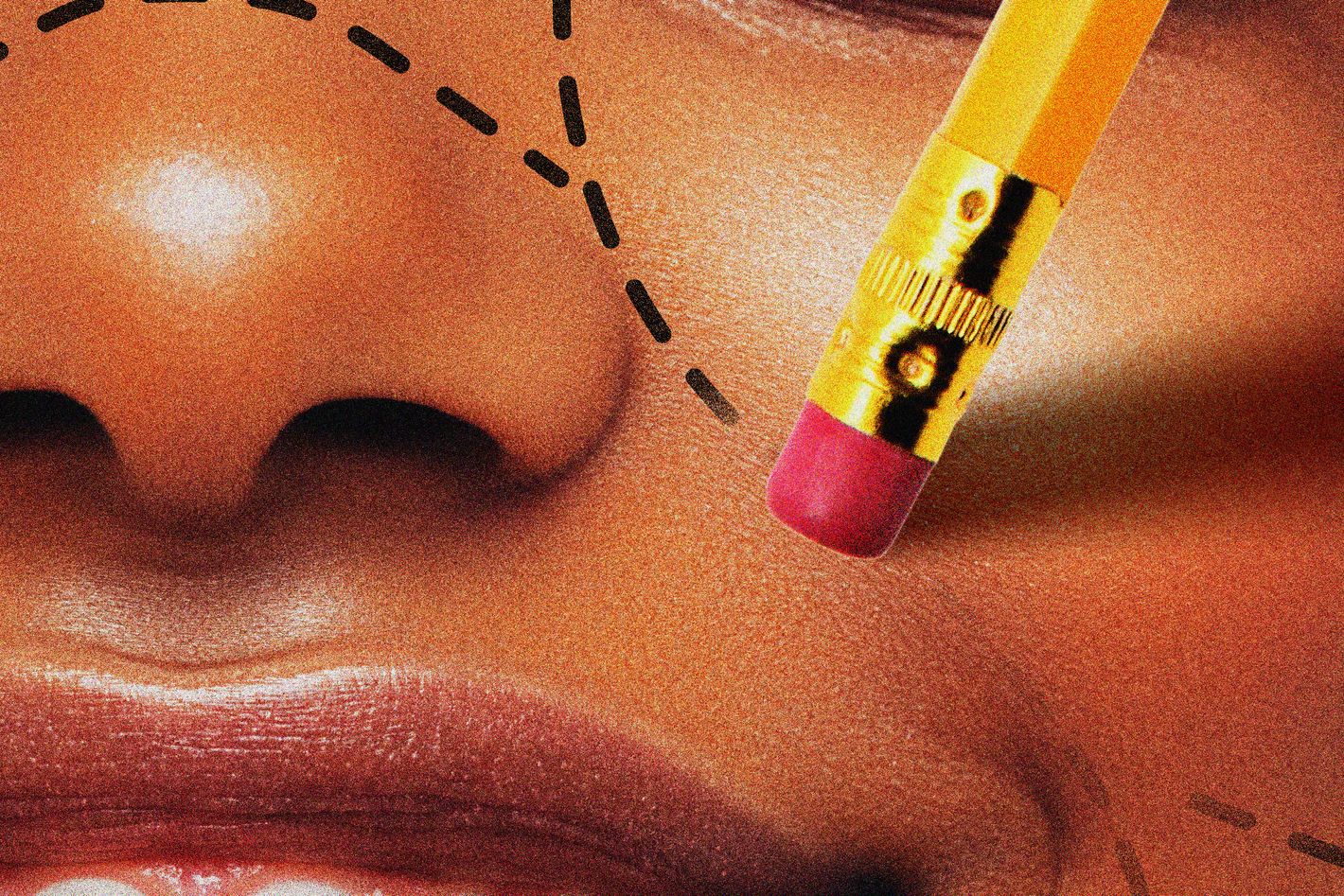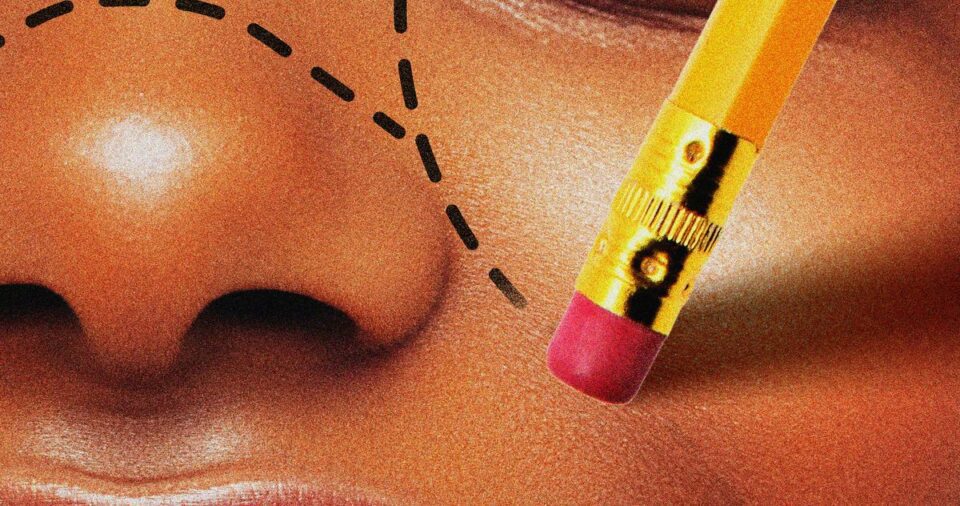
Alivia D’Andrea decided to “glow up” when she was 17 years old. The YouTuber, who is now 23 and lives in Los Angeles, had developed acne and gained some weight, she says, typical side effects of puberty. For D’Andrea, these physical changes spelled the end of her “peak” in senior year of high school. “In the first semester, things were going really well — the guy that I was in love with took an interest in me,” she says. “And then, out of the blue, I got cystic acne and he disappeared.” Soon, she jotted down a list of goals — lose weight, exercise, hydrate consistently, improve her bedroom’s aesthetic, find her personal style, and whiten her teeth — and began to drastically change her eating habits and skin-care routine, starting Accutane, drinking 32 ounces of water before meals to “reduce hunger cravings,” and working out daily. D’Andrea documented her pursuit of hotness on her YouTube channel in a raw docuseries titled Glow Up Diaries. From October 2018 to July 2020, she posted 16 intimate teenage-diary-style episodes documenting her “deepest, most painful” moments. She whispered into the camera in her dorm room before a 5 a.m. workout and posted shaky POV shots of serving herself broccoli in her college cafeteria. Despite D’Andrea being in visible distress, the videos were sprinkled with motivational quotes. “You create yourself. At the bottom of laziness, insecurity, fear, self doubt, was you,” she wrote in a 2019 video. Then she disappeared off the platform for three years. In February 2024, D’Andrea returned to YouTube and her more than 2.4 million subscribers to share that glowing up had “ruined” her life.
Becoming her version of an “after” photo, it turns out, came at a cost. “I poured all my love and attention into the idealized version of myself,” she says, “while neglecting and mistreating the person I was in the present moment.” D’Andrea says that her followers applauded her at first for openly sharing her journey, but soon turned on her in the comments, criticizing her “progress.” “After that, I stopped posting on YouTube and went into a depression,” she says. “I wasn’t suicidal, but I had no will to continue anymore because I thought, If I can’t be my glowed-up self, there’s just no point in life.”
In a society where losing weight can boost a woman’s salary by as much as obtaining a master’s degree and people are treated better by strangers post–plastic surgery, it’s easy to see how “glowing up” can feel like opening a door to a different life. But after years of being bombarded with videos on ten-step skin-care routines, optimized morning-wellness rituals, life-changing StairMaster hacks, and viral plastic-surgery procedures, creators like D’Andrea are retiring from the chase. They’re posting their glow-up regrets and documenting the reversals of the procedures or habits that garnered their following count to begin with — accepting their ultimate “glow down.”
A core element of divesting from the “glow up” mentality is removing the desire for physical improvement from the center of your life. For D’Andrea, this has taken years. “Glowing up was all I ever knew,” she says. “I didn’t have any goals outside of it.” Today, her pursuits are far more well rounded, including furthering her storytelling skills (with a new YouTube series about dating on the way), reading more, taking dance classes, and improving her social life. Cherry Tung, a 28-year-old early-retirement coach in Los Angeles, says she grew up blaming all her problems on “my physical appearance and was under the impression that improving that was the solution to everything else.” Tung says her family was “extremely focused” on looks while she was growing up. She remembers her grandma referring to her as “the ugliest cousin.” So she first got nose fillers in Shanghai when she turned 17. A year later, she got a nose job with a nose implant (placing a synthetic product in the nose to alter the shape).
According to Tung, the results were barely visible, so she got a revision just over a year later. Since then, Tung has had multiple rhinoplasty revisions. She’s been vocal online about experiencing plastic-surgery regret, sharing stories about the “rhinoplasty fails” to her 21,000 followers in between her regular personal-finance advice videos. “A couple of years after my second rhinoplasty, I noticed the tip of my nose became transparent and I could see the implant,” she says. Tung saved $10,000 to remove the implant, and her revisions have been an ongoing cost — her latest procedure cost around $25,000. Dr. Melissa Doft, a double board-certified plastic surgeon in New York, says two of the biggest reversal requests she’s seeing are breast-implant removal and rhinoplasty revisions. (Tung is not one of her patients.) This includes building up the cartilage and reducing the tip on the popularized “ski jump” nose shape. Dr. Doft has also seen a recent rise in lip-filler reduction requests. “A lot of people who felt overplumped and overfilled want a natural glow, not a glow up,” she says.
While Tung doesn’t regret any one procedure itself, she does regret undergoing “sketchy” procedures in the past, including a surgeon who Photoshopped her result photos after giving her a $1,000 influencer discount. But, mostly, she regrets the time, effort, and energy that went into glowing up. Not to mention the money — while her parents paid for her first nose job, she’s footed the bill for the others since. She’s also experienced severe anxiety over her revision results, saying her nose is “still uneven” and there’s been prolonged bruising. “I’ve shown the before pictures to my exes and even my husband and they all went, ‘You don’t look that different,’” she says. “I’ve spent so much money and went through all that pain and brutal recovery and they would have dated me anyway.”
For some people, their glow-up journey started not as an attempt to meet anyone, but to be the “perfect” bride. Ten years ago, after Amy Chang, 37, got engaged, she came up with a “glow-up plan” right away. “The idea must have come from magazines,” she says. Chang began doing IPL and Fraxel lasers and got fillers and masseter Botox for the first time in the year leading up to her wedding. Chang was pleased with the results on her big day. “It was after my wedding that things started to go downhill,” she says. “I woke up one morning and it was like I had rapidly aged overnight and my lower face looked like it had melted. I was terrified.” Chang says her masseter muscle (one of the muscles responsible for chewing) had shrunk so dramatically through Botox that her lower face “didn’t have support” anymore. It’s taken years of “excruciatingly painful” skin-tightening treatments like Ultherapy, facial exercises, fillers, and microcurrents to fix her “glow up gone wrong.” “Even with that, I’ve never been able to return back to the amount of volume that my face originally had,” she says. Chang shared her experience on TikTok with more than 1.6 million followers earlier this year, wanting to counterbalance the current buzz online around masseter Botox. “You would not believe the amount of women who have DM’d me privately and said, ‘This same thing happened to me, how do I fix my face?’” she says.
There’s an obvious overlap between “glow-up” and “glow-down” content. We love watching drastic changes at the expense of others, and the videos do similarly reach millions of viewers. But the messaging itself seems to be profoundly different. YouTuber Haley Pham posted her “glow-up reversal” journey in March 2024. The process was minimal: She took out her piercings and stopped dyeing her hair, getting her nails done, and installing eyelash extensions after five years of wearing them “constantly.” “I feel like my attention was on the wrong things and I could be a more useful person if I weren’t so self-focused,” she says. “The focus for the day should be if I’m being a good friend to people.” Pham says a Bible verse inspired the return to form.
There’s some concern that the very existence of the term “glowing down” only feeds into “glow-up” ideology — that our lives are one big incline for either increasing or decreasing hotness. But D’Andrea says she’s now making videos that her younger self needed at the start of her journey toward self-acceptance. Chrissy King, a 38-year-old body-positivity influencer, coach, and author of The Body Liberation Project, says that at her worst point, she was spending 20 hours a week at the gym, tracking her food, and skipping social events. “I was consistently reading self-help books and in a never-ending cycle of trying to glow up and reach a new level,” she says.
In 2019, King’s father passed away unexpectedly, and she went through a divorce. Faced with the fragility of life, everything clicked into perspective, and her attempts at “glowing up” felt futile. After years of divesting from self-improvement culture, King has a more balanced routine: going to the gym two or three days a week, trying not to compare herself to others, and swapping the self-help books for fiction. “I was not going to spend the rest of my life trying to fix myself or climb the corporate ladder,” King says. Now she exists without any metaphorical ladder, incline, or vertical direction to climb.
Related
- Everyone’s Dissolving Their Pillowy Filler Faces
Laura Pitcher , 2024-06-07 13:00:39
Source link

